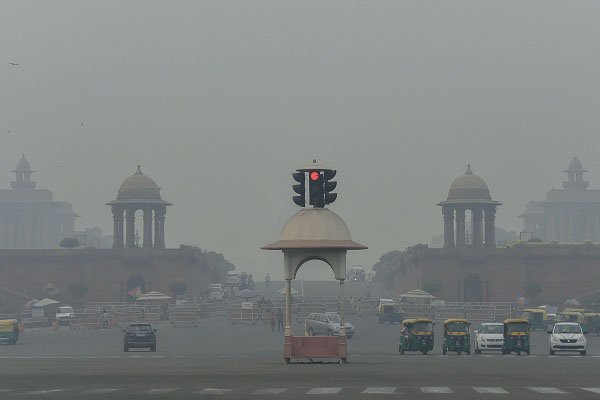Delhi, the capital city of India, is currently grappling with a combination of dense fog and high levels of air pollution, posing challenges for residents and authorities. As of 6:00 am on Wednesday, the Air Quality Index (AQI) in Delhi stood at 364, categorizing it as “Very Poor,” according to data from the Central Pollution Control Board (CPCB). This places Delhi in the second position among the top 10 most polluted cities in India.
The persistent weather conditions, marked by dense fog, have significantly reduced visibility in the region, impacting daily activities and transportation. The Indian Meteorological Department (IMD) reported a minimum temperature of 8.7 degrees Celsius and a maximum temperature of 21.4 degrees Celsius in Delhi. The weather forecast for the day includes a cloudy sky with dense fog in the morning, and the city is expected to experience rain with thundershowers. Gusty winds of around 30-40 km per hour are also predicted during the evening hours.
Various locations across Delhi have reported varying levels of air quality, with Nehru Nagar recording the worst air quality with an AQI of 445, classified as “Severe.” In contrast, Lodhi Road exhibited better air quality, with an AQI of 295 falling into the “Poor” category.
The deteriorating air quality in Delhi is not only a result of atmospheric conditions but also the impact of various pollution sources. The city has been struggling with air pollution, especially during the winter months, when factors like stubble burning, vehicular emissions, and industrial activities contribute to the deterioration of air quality.
In the broader National Capital Region (NCR), which includes satellite cities like Noida, Greater Noida, Ghaziabad, Faridabad, and Gurugram, varying AQI levels have been reported. Noida recorded an AQI of 346, Greater Noida 408, Ghaziabad 296, Faridabad 305, and Gurugram 282.
The combination of cold weather and persistent pollution has raised health concerns, particularly for vulnerable populations such as children and individuals with respiratory conditions like asthma. Dr. Suresh Kumar, the Medical Director of Loknayak Jai Prakash Hospital, noted an increase in cases of chest infections and pneumonia, particularly among children and the elderly, during this winter season.
In response to the challenging air quality conditions, the CPCB and other authorities have been closely monitoring the situation. On Monday, the sub-committee for the operationalization of the Graded Response Action Plan (GRAP) convened an emergency meeting. It was decided that if the AQI breaches the 400 mark, restrictions under Stage III of GRAP would be invoked to control air pollution. However, the central government opted against implementing these measures, considering the projected short duration of the dip in air quality, as indicated by the IMD and the Indian Institute of Tropical Meteorology (IITM).
The citizens of Delhi have been advised to take precautions, such as using face masks and minimizing outdoor activities, especially during periods of dense fog and high pollution levels. The situation highlights the ongoing challenge of managing air quality in Delhi and the need for comprehensive measures to address pollution sources and improve overall environmental conditions in the region.
As the day progresses, the anticipated rain and thundershowers may provide temporary relief, but addressing the underlying causes of air pollution remains crucial for the long-term well-being of Delhi’s residents. The government and relevant authorities continue to work on strategies and policies to tackle the complex issue of air pollution and create a healthier living environment for the people of Delhi.
